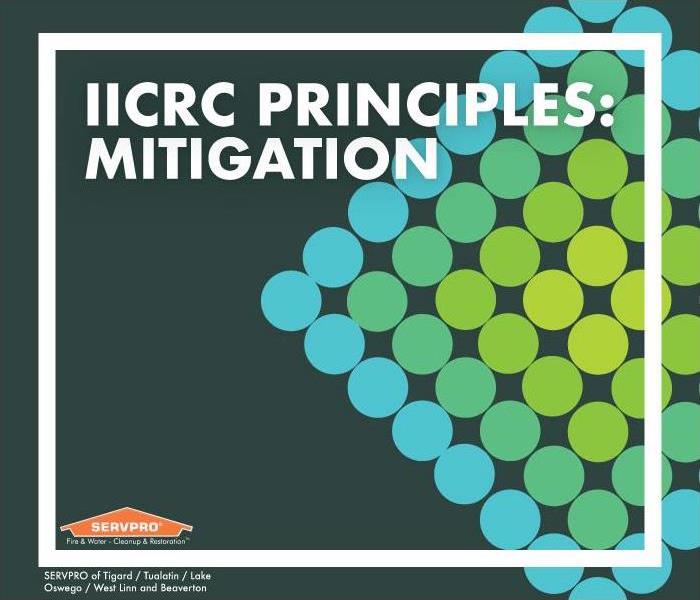The steps to mitigating Tigard/Tualatin water damage
11/17/2020 (Permalink)
Here at SERVPRO, we believe it’s important for our community to understand the principles that outline the work we do. The Institute of Inspection, Cleaning, and Restoration Certification (IICRC) is a standards developing organization for the inspection, cleaning, and restoration industries. SERVPRO of Tigard/Tualatin/Lake Oswego/West Linn and Beaverton and all other restoration companies follow the standards and guidelines put forth by the IICRC. The standards manual for water damage restoration is the S500.
To learn more about the IICRC, visit our previous blogs on the S500 series The certification firm every restoration professional uses, The importance of safety and health on a restoration worksite, and The importance of documentation on water damage worksite.
In this series, we are outlining the principles of water damage restoration work, the first two being Safety and Documentation. This blog is regarding the third principle outlined in the S500.
S500 Principle 3: Mitigate further damage.
The goal of mitigation is to control the moisture and contamination of the affected areas.
The first step in mitigation is to check for the source of the moisture problems and correct the issue. A building owner is ultimately responsible for correcting the source of water intrusion, but a restoration company will assist in identifying the source. Before any drying can be done, the source of water must be stopped.
The second step in mitigation is control any microbiological contamination resulting from the moisture. If there are contaminants present, they are to be contained to prevent their spread. When there is no obvious microbiological contamination present, the best way to prevent the development of bacteria is to dry the contents and structures quickly. This is why time is of the essence for water damage restoration.
When a crew chief or project manager arrives on-site, they will assess the situation and determine what work activities need to take place. Determining if the water is contaminated is one of the first things they do, as remediation activities may push back any plans for drying the structure.
Before any drying can happen, restoration professionals must identify the category of the water intrusion, create a work activity plan, and prevent any contaminant spread, hazards, or other issues by using engineering controls. These controls can be building contrainments, establishing negative pressure air filtration systems, sealing HVAC ventilation ports, and more.
Once all these details are accounted for, restorers can set up the drying equipment and begin the drying process.
If you experience water intrusion in your home or business, trust SERVPRO of Tigard/Tualatin/Lake Oswego/West Linn and Beaverton to handle your needs. Call us any time or day at 503-684-5829.

 24/7 Emergency Service
24/7 Emergency Service
